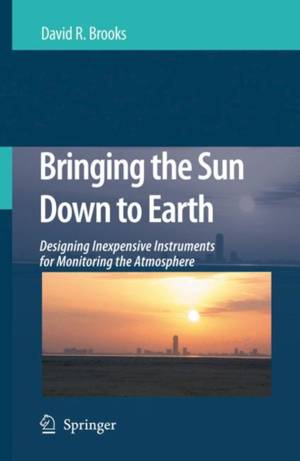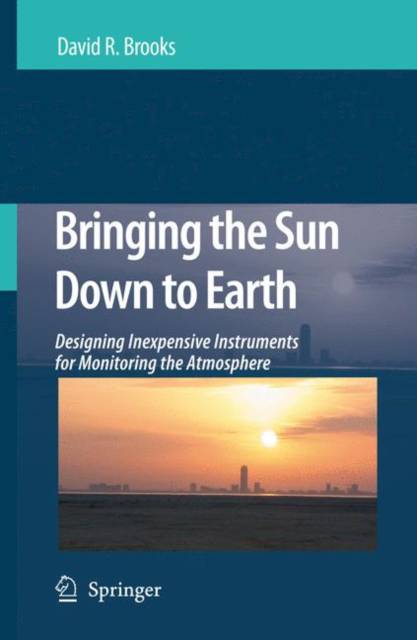
- Afhalen na 1 uur in een winkel met voorraad
- Gratis thuislevering in België vanaf € 30
- Ruim aanbod met 7 miljoen producten
- Afhalen na 1 uur in een winkel met voorraad
- Gratis thuislevering in België vanaf € 30
- Ruim aanbod met 7 miljoen producten
Zoeken
Bringing the Sun Down to Earth
Designing Inexpensive Instruments for Monitoring the Atmosphere
David R Brooks
Hardcover | Engels
€ 153,95
+ 307 punten
Omschrijving
In 1998, my colleague, Forrest Mims, and I began a project to develop inexpensive handheld atmosphere monitoring instruments for the GLOBE Program, an international environmental science and education program that began its operations on Earth Day, 1995. GLOBE's goal was to involve students, teachers, and scientists around the world in authentic partn- ships in which scientists would develop instrumentation and experimental protocols suitable for student use. In return, data collected by students and their teachers would be used by scientists in their research. This kind of collaboration represented a grand vision for science education which had never before been attempted on such a scale, and we embraced this vision with great enthusiasm. Between 1998 and 2006, Forrest Mims and I collaborated on the development of several instruments based on Mims' original concept of using light emitting diodes as spectrally selective detectors of sunlight, which was first published in the peer-reviewed literature in 1992. These instruments have evolved into a set of tools and procedures for monitoring the transmission of sunlight through the atmosphere, and they can be used to learn a great deal about the composition of the atmosphere and the dynamics of the Earth/atmosphere/sun system. If measurements with these instruments are made properly, they have significant scientific value, as well.
Specificaties
Betrokkenen
- Auteur(s):
- Uitgeverij:
Inhoud
- Aantal bladzijden:
- 157
- Taal:
- Engels
Eigenschappen
- Productcode (EAN):
- 9781402086939
- Verschijningsdatum:
- 12/08/2008
- Uitvoering:
- Hardcover
- Formaat:
- Ongenaaid / garenloos gebonden
- Afmetingen:
- 155 mm x 236 mm
- Gewicht:
- 385 g

Alleen bij Standaard Boekhandel
+ 307 punten op je klantenkaart van Standaard Boekhandel
Beoordelingen
We publiceren alleen reviews die voldoen aan de voorwaarden voor reviews. Bekijk onze voorwaarden voor reviews.











